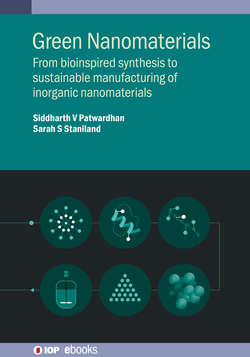Читать книгу Green Nanomaterials - Siddharth Patwardhan - Страница 10
На сайте Литреса книга снята с продажи.
1.1.2 Drivers for green approaches
ОглавлениеOne of the main issues leading to adverse environmental impact is the generation of waste in a chemical process. Depending on the technological, economical and legislative frameworks, the quantities of waste produced, in particular, in relation to the amount of product produced, vary from sector to sector. For example, some industrial sectors are technologically very advanced, such that they have developed ways to minimise waste, e.g. petroleum refining. On the other hand, in some other sectors, the cost of the product is significantly higher than the loss of value from waste or cost of treating waste, and hence waste minimisation is not given due importance (e.g. pharmaceuticals). There are also examples where pro-active legislation has driven the chemical industry to find innovative ways to minimise waste. Waste relates to inefficiencies in a given process, which leads to loss of valuable resources (e.g. substances and energy) and it can cause risks to the environment and health, which ultimately increases the process costs. Figure 1.2 illustrates the financial, environmental and societal origins of the costs associated with waste.
Figure 1.2. Costs associated with waste. Reproduced with permission of the Royal Society of Chemistry from [1].
If one considers the total costs for waste originating from all areas as shown in figure 1.2, it implies that in order to drive green chemistry, the process or product costs associated with a new green technology (N) should be lower than or at least equal to the costs of the existing (wasteful) processes (E),
i.e.N⩽E.(1.1)
Along similar lines, the profits from the new process should be higher or at least the same when compared to the existing process. The cost of green technology includes new production costs (P′) and the investment needed for developing new green technologies (G), which would reduce the waste and avoid the loss of the image of the business. On the other hand, continuing to operate using existing process includes current production costs (P) and incurs waste management costs (W) as well as costs associated with the loss of public image (I),
∴G+P′⩽P+W+I(1.2)
∴G⩽(P−P′)+(W+I).(1.3)
This is a simplistic approach to describe various scenarios and consequences. First, if the company does not wish to invest at all (G = 0), then it means that the new process costs can be higher than the existing process costs, but only by the sum of the costs of waste management and those associated with the loss of image,
i.e.∴(P′−P)=(W+I).(1.4)
Without any investment, it is not easy to obtain access to a new and sustainable process. Further, if the costs for managing the changes in the process (e.g. downtime, marketing, customer satisfaction, etc.) are considered, then in reality,
∴(P′−P)≪(W+I).(1.5)
This leaves very little incentive for developing a greener process and highlights the strong need for initial investment and the motivation for sustainability at all levels of the organisation. On the other hand, if a new process is developed such that there are no additional process costs (P − P′ = 0), then the investment needed would be of the order of the cost savings from waste reduction and maintenance of the image,
i.e.G⩽W+I.(1.6)
The production costs and the type and amount of waste generated are not just dependent on the chemical reaction. Other factors such as choice of solvent and downstream separation and purification processes play a major role. Therefore, developing greener approaches is not about simply operating at lower temperatures or using volatile solvents, for example. Sometimes it may be about balancing the priorities or perhaps radically changing the processes.
